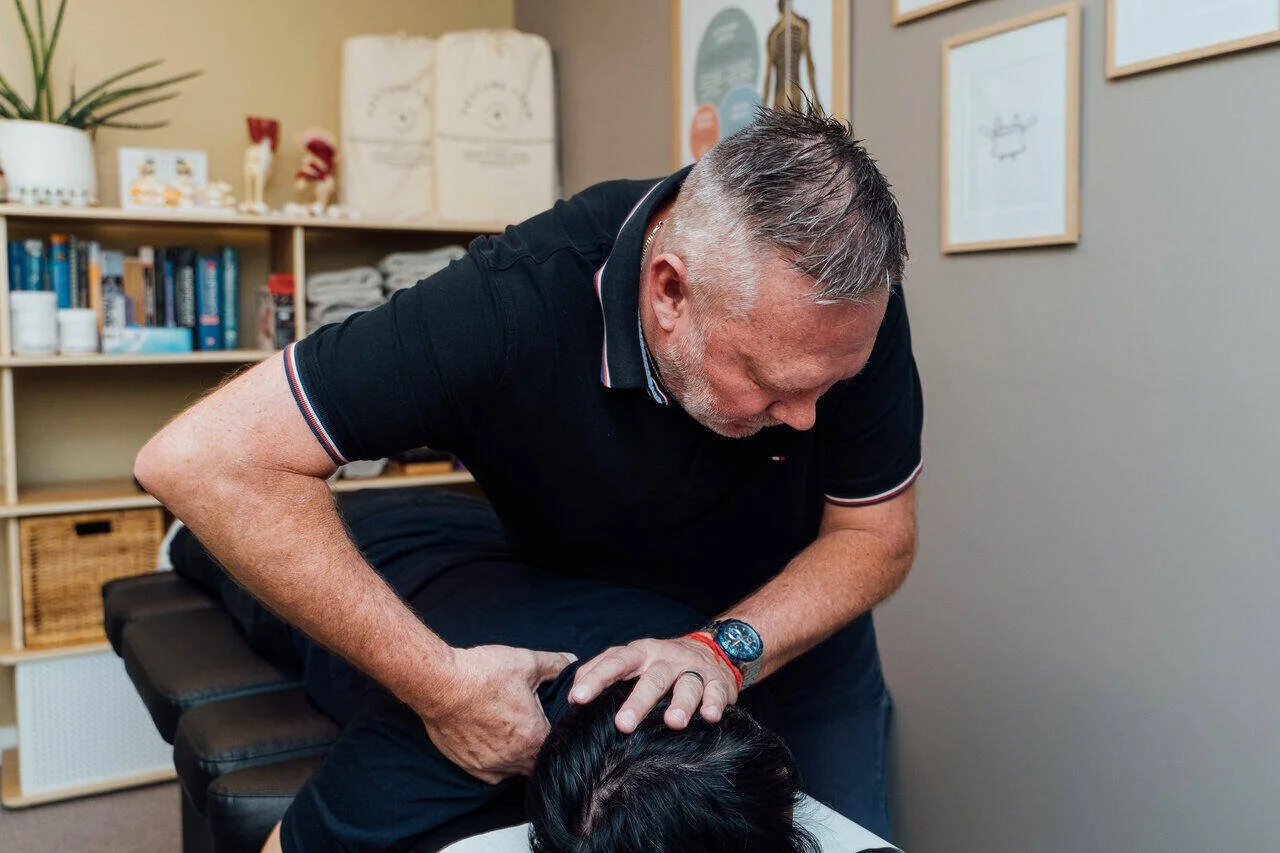TMJ Headaches: Understanding The Link & Exploring How a Jaw Chiropractor Can Help
First, let us understand what TMJ dysfunction is.TMJ dysfunction, or TMD, refers to problems that impact the jaw joint and surrounding muscles. This disorder can manifest in a variety of ways including restricted jaw movement, discomfort during eating, stiffness or popping and clicking sounds when the jaw is moved. Additionally, some patients may have other symptoms like earaches, pressure behind the eyes, face pain or even discomfort that spreads to the shoulders and neck.
Your jawbone and skull are joined by the temporomandibular joint (TMJ) which works like a sliding hinge. The muscles and ligaments supporting this joint must work harder when it is strained, misplaced or inflamed, which causes tension and pain. This dysfunction can be caused by a number of factors, including arthritis, poor posture, jaw misalignment, stress induced teeth grinding (bruxism) and prior trauma. The strain on the nearby muscles and nerves might eventually spread upward frequently leading to TMJ headaches or a tense, pressure-like face.
How TMJ dysfunction can cause headaches
Now, let’s explore the connection between TMJ dysfunction and headaches. Numerous vital muscles, ligaments and nerves that pass through the head and neck are located close to the TMJ. The surrounding tissues may become irritated when this joint becomes stiff, inflammatory or misplaced, which can cause discomfort to extend to neighbouring locations. Tension-type headaches, which frequently feel like a dull, constant pressure across the temples, forehead or sides of the head can be brought on by tight jaw muscles. Similarly, migraine-like pain occasionally accompanied by face discomfort or light sensitivity, can result from stimulation of the trigeminal nerve, a key nerve that connects to the TMJ.
A misplaced jaw can occasionally throw off the body's natural posture, putting more strain on the shoulders and neck. This imbalance could lead to more tense muscles and frequent headaches. Many persons who experience persistent head discomfort eventually discover that the cause isn't solely neurological but rather related to the position and function of their jaw, demonstrating the close connection between the TMJ and the rest of the body.
Signs your headaches might be related to TMJ
Although it might be difficult to determine whether headaches and TMJ issues are related, the following symptoms may indicate a connection:
Jaw pain or stiffness, particularly after eating or waking up
Sounds that come from opening or closing your mouth, such as clicking, popping or grinding
Headaches that start behind the eyes or close to the temples
Swelling or soreness in the face
Ear ache or fullness that isn't caused by an illness
Your headaches are accompanied by strain in your shoulders and neck.
It's worthwhile to think about getting evaluated by a licensed chiropractor or jaw specialist if a few of these symptoms seem familiar.
How a jaw chiropractor can help with TMJ headaches
An all-natural, non-invasive method of treating TMJ-related headaches is chiropractic therapy. Restoring equilibrium and appropriate motion to the jaw, neck and spine's joints and muscles is the main goal of a jaw chiropractor.
Here are some ways that chiropractic therapy can help:
Correcting posture and alignment - Your jaw movement may be impacted by misalignment in your neck or upper back. Chiropractors can lessen TMJ strain by adjusting spinal position.
Muscle release and relaxation - Light manual techniques assist reduce shoulder, neck and jaw muscle tension, which frequently reduces headache pressure.
Joint mobilisation - To increase joint mobility and lessen inflammation surrounding the TMJ, chiropractors employ precise movements..
Stress management and lifestyle - teeth clenching or grinding, particularly under stress, is associated with a number of TMJ problems. To avoid recurrence, chiropractors frequently advise patients on ergonomic modifications, relaxation methods and exercise.
Regular care may eventually assist to enhance jaw function overall, lessen headache frequency and restore comfort.
Self-care tips for TMJ headaches
Small everyday routine changes can significantly reduce symptoms in addition to professional therapy. To ease tense jaw muscles, use warm compresses and refrain from chewing gum or hard foods that strain the jaw. As advised by your chiropractor, perform mild jaw exercises and keep proper posture, particularly when using computers or other mobile devices.
It can also be beneficial to manage stress with breathing techniques, mindfulness or mild exercise. These easy steps can help stop the cycle of headaches and jaw strain when paired with chiropractic care.
When to seek professional help
It's advisable to pay attention to your symptoms if you've been experiencing persistent headaches, jaw discomfort or stiffness. If TMJ dysfunction is not treated, it may get worse over time. A jaw chiropractor can help to evaluate your ailment, determine the underlying reason and develop a customised treatment strategy.
In addition to relieving headaches, treating TMJ disorders early on can enhance your general quality of life by restoring the ease of routine activities like eating, speaking and smiling.
Final thoughts
Even though there can be numerous causes of headaches, TMJ dysfunction is one that is often disregarded. The first step to long-lasting treatment is realising how your head and jaw discomfort are related.
The goal of chiropractic treatment is to bring your jaw, neck and spine back into harmony with gentle adjustments and comprehensive care. See a jaw chiropractor for an evaluation if you think your headaches could be related to TMJ problems. A balanced jaw might result in more pleasant days and a clearer head.
Find lasting relief from TMJ headaches, book a consultation with a Tan Chiro jaw chiropractor today.


